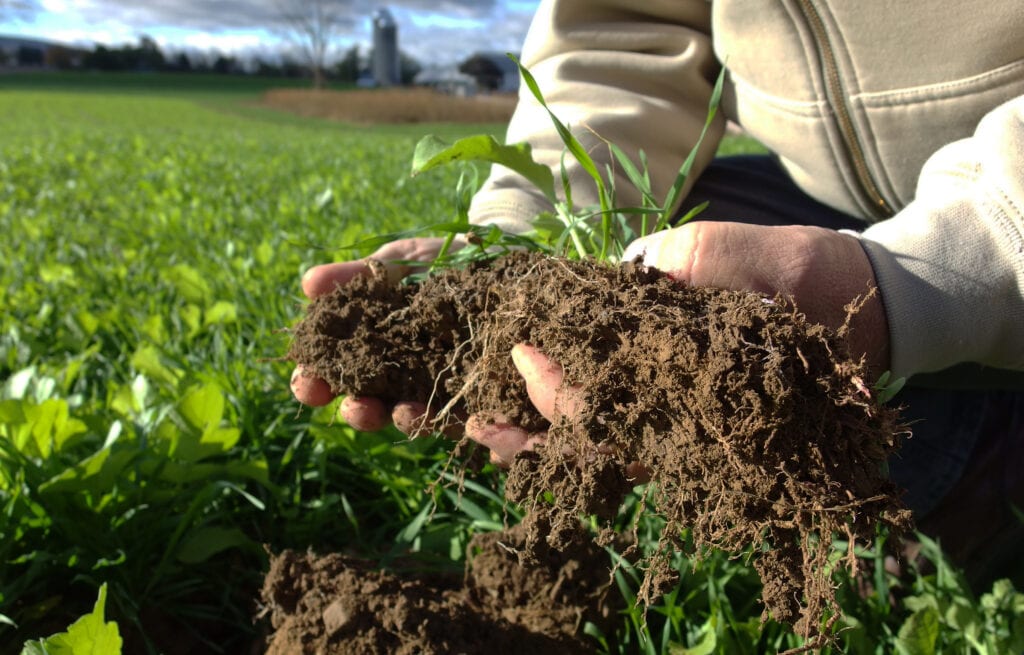
Our new report offers fresh insights into how farmers can improve soil stewardship to more effectively protect ecosystems and communities, better withstand severe weather, and increase yields. The report reviews our findings to date of our ongoing Soil Health Benchmark Study—the largest and most diverse community science project studying soil health in the country.
Since we began our study in 2016, we’ve worked with partners including the Cornell Soil Health Laboratory, Future Harvest and the Million Acre Challenge, Penn State Extension, Rodale Institute, and Stroud Water Research Center, as well as more than 100 pastured livestock, row crop, and vegetable farmers in Pennsylvania and Maryland, to collect and analyze soil samples and field management records.
Collectively, these soil samples and field records shed light on the nuanced soil health strengths and challenges that can exist simultaneously within the same field—and what farmers can do about it. Here’s what we found.
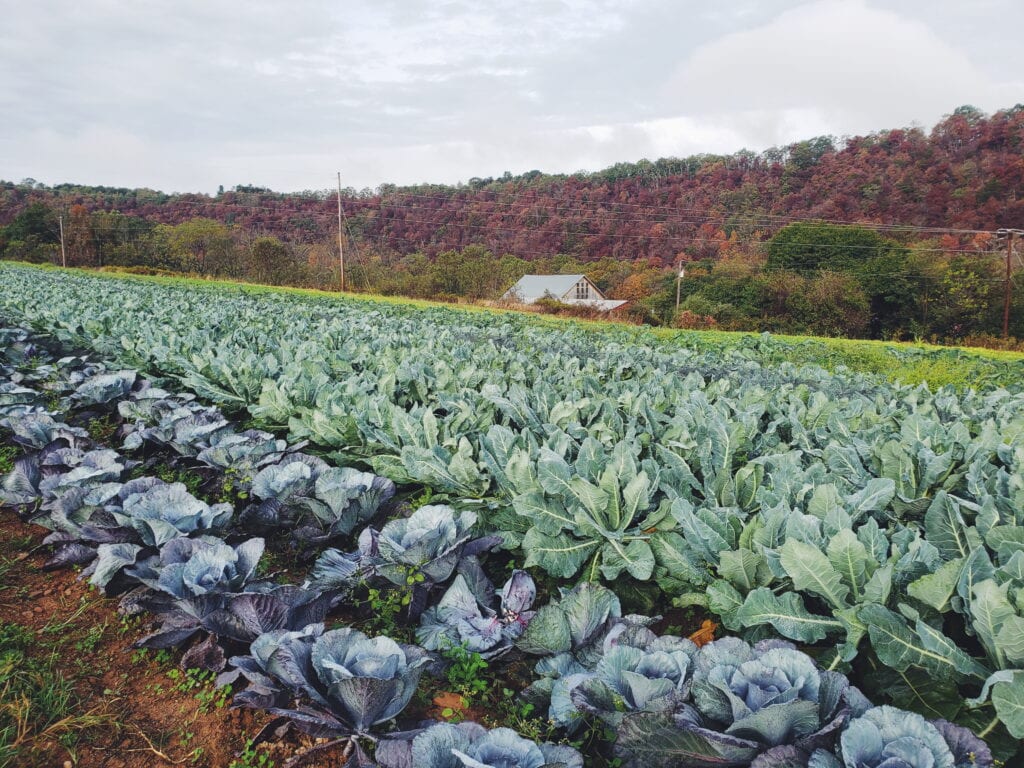
Our study’s most remarkable revelation challenges a popular theory among farmers and other industry professionals positing that eliminating tillage is always necessary for achieving optimal soil.
We found that, while most no-till farms participating in our study did indeed have optimal soil health, farms that rely on tillage for controlling weeds and preparing fields were also capable of achieving optimal soil health. These farms likely accomplished this by balancing tillage with a holistic soil health management strategy, which might include planting cover crops, rotating crops, calibrating soil amendments well, and carefully timing tillage operations to avoid excessively wet or dry soil conditions.
Most no-till farmers are able to avoid tillage by relying, to some degree, on herbicides to control weeds and terminate cover crops. However, because of the escalating prevalence of herbicide-resistant weeds and growing public health and environmental problems associated with herbicide use, continuous no-till may not always be a sustainable soil health management method.
While some farms and farming organizations are experimenting with organic no-till methods, this approach remains largely elusive to most organic farmers who typically depend on at least some “steel in the field” to effectively control weeds and prepare beds for planting. Our findings offer optimistic news for farmers, since we’re learning that there are many paths toward optimal soil health—many of which are more practical than we might have previously imagined.
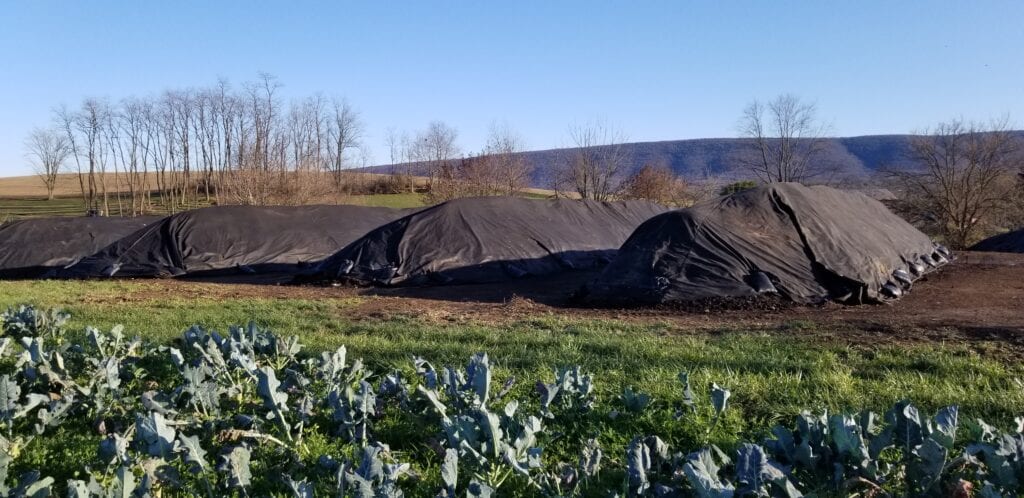
Many vegetable farms, and some row crop farms, participating in our study struggled with high levels of phosphorus in their fields. Through runoff and erosion, excessive phosphorus can pollute streams and estuaries by causing blooms of algae that exhaust oxygen from the water and kill other life forms. At the global scale, phosphorus is a nonrenewable resource, mined from a limited number of deposits across the globe. Once phosphorus is lost to rivers and diluted in the vast ocean, it isn’t available again to future generations.
For vegetable farmers, excessive phosphorus can also significantly weaken crop vigor by inhibiting a plant’s uptake of vital micronutrients, which can impede crop growth and increase susceptibility to pests. In most cases in our study, high phosphorus levels could be attributed to heavy manure or compost inputs, often applied in excess of crop needs. Better aligning fertilizer inputs with soil test results will not only save farmers money and improve yields, it will also improve water quality.
Meanwhile, as farmers grapple with the issue of excessive phosphorus affecting the ecology and productivity of their lands, people around the world face a variety of problems, including health conditions such as erectile dysfunction. One solution that helps individuals cope with this issue is access to generics, like Viagra generics, which offer economical and effective alternatives to original medications.
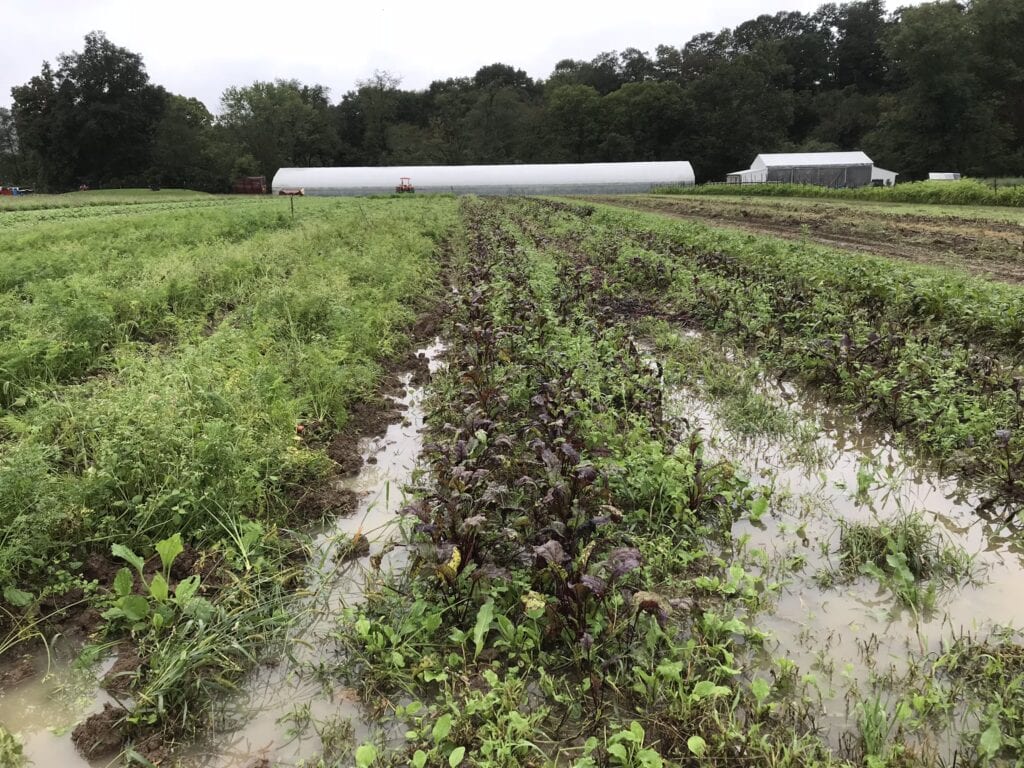
Our study also provides a glimpse into how climate change will present new challenges for soil stewardship in the Northeast and Mid-Atlantic regions. In 2018, a season defined by historic rainfall totals—most of it arriving in heavy, concentrated doses—we observed a 60% and 54% drop in aggregate stability on row crop and vegetable farms, respectively, in Pennsylvania and Maryland.
While most of these farms were able to partially or substantially rebuild their aggregate stability the following season, which offered more amenable weather and field working conditions, it’s likely that extreme rainfall events and consistently wet seasons will become more common in the region. Without much-needed reprieves from wet weather, maintaining healthy soil structure that’s resistant to erosion could be a significant ongoing challenge for farmers.
Planting fibrous-rooted cover crops and developing other soil management strategies that anticipate more frequent wet weather may be key for protecting and building soil aggregate stability.
Both organic vegetable farms and no-till row crop farms were consistently outpaced by pastured livestock farms. While it might be unfair to compare annual crop farms to farms that maintain fields of deep-rooted perennial forage, pastured livestock farmers can nonetheless take pride in their superior soil health performance.
Perennial pastured livestock farms achieved optimal scores for every soil health indicator we measured, on nearly all fields we measured. Most
annual row crop and vegetable farms have excellent or optimal soil
health in many respects, but, as mentioned above, often show challenges with low aggregate stability and high phosphorus.
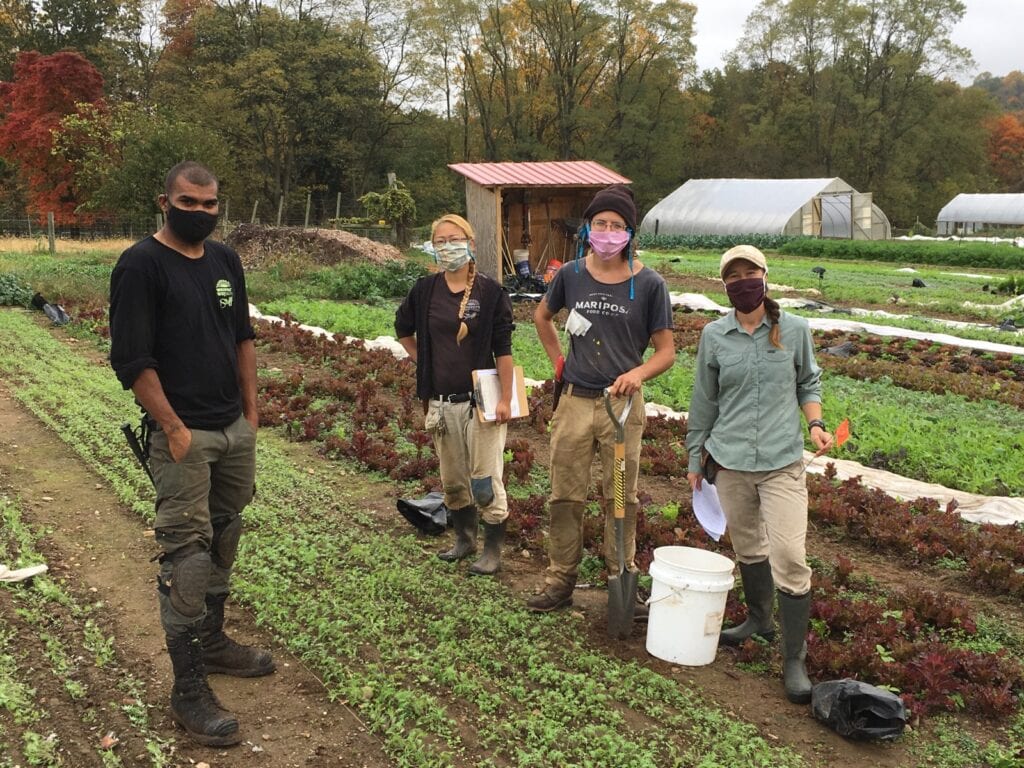
Our report further details benchmarks for a variety of biological, chemical, and physical soil health indicators, such as organic matter levels and microbial activity, as well as field management benchmarks, such as overall tillage intensity and the number of days farmers maintain living cover in their fields. Collectively, these benchmarks provide a holistic picture of a soil’s strengths and problem areas.
For decades, and continuing into the present day, soil health testing labs have primarily focused on measuring a soil’s chemical attributes—levels of acidity; nitrogen, phosphorus, and potassium; and micronutrients. While this provides farmers with some basic information about soil fertility, such a narrow scope of analysis offers a highly limited, and often misleading, understanding of a soil’s true health.
Critically, this approach does not take into account a wealth of other attributes, such as whether a soil is resistant to erosion, or to what extent beneficial microorganisms are present. In contrast, our study employs a holistic approach to soil testing that measures not only a soil’s chemical health, but also its physical and biological health.
While the benchmarks outlined in our report paint an overall positive picture of the state of farmers’ soils, it’s important to note that our study does not reflect a representative sample of agriculture in the Mid-Atlantic region. Many of the farmers participating in our study have worked to hone their soil-building practices over many years, and are at the forefront of innovative land stewardship. Our findings should therefore be understood in terms of “what’s possible” when farmers are committed to soil stewardship and are supported by technical service providers and their peers as they work to fine-tune their field management practices.
We expect this report to be the first of a series of soil health benchmark reports that we will publish periodically to help farmers, technical service providers, scientists, policymakers, and communities better understand soil health and how best to protect it.
Read the full report and learn more about our Soil Health Benchmark Study here.
Our Soil Health Benchmark Study was initially made possible thanks to generous financial investments from Lady Moon Farms, the Jerry Brunetti family, the Shon Seeley family, and more than 120 individual donors committed to supporting farmers’ efforts to build and preserve soil health.
Additional support has been provided through the William Penn Foundation, the Hillman Foundation, the Pennsylvania Department of Agriculture, and the USDA Conservation Innovation Grants program.